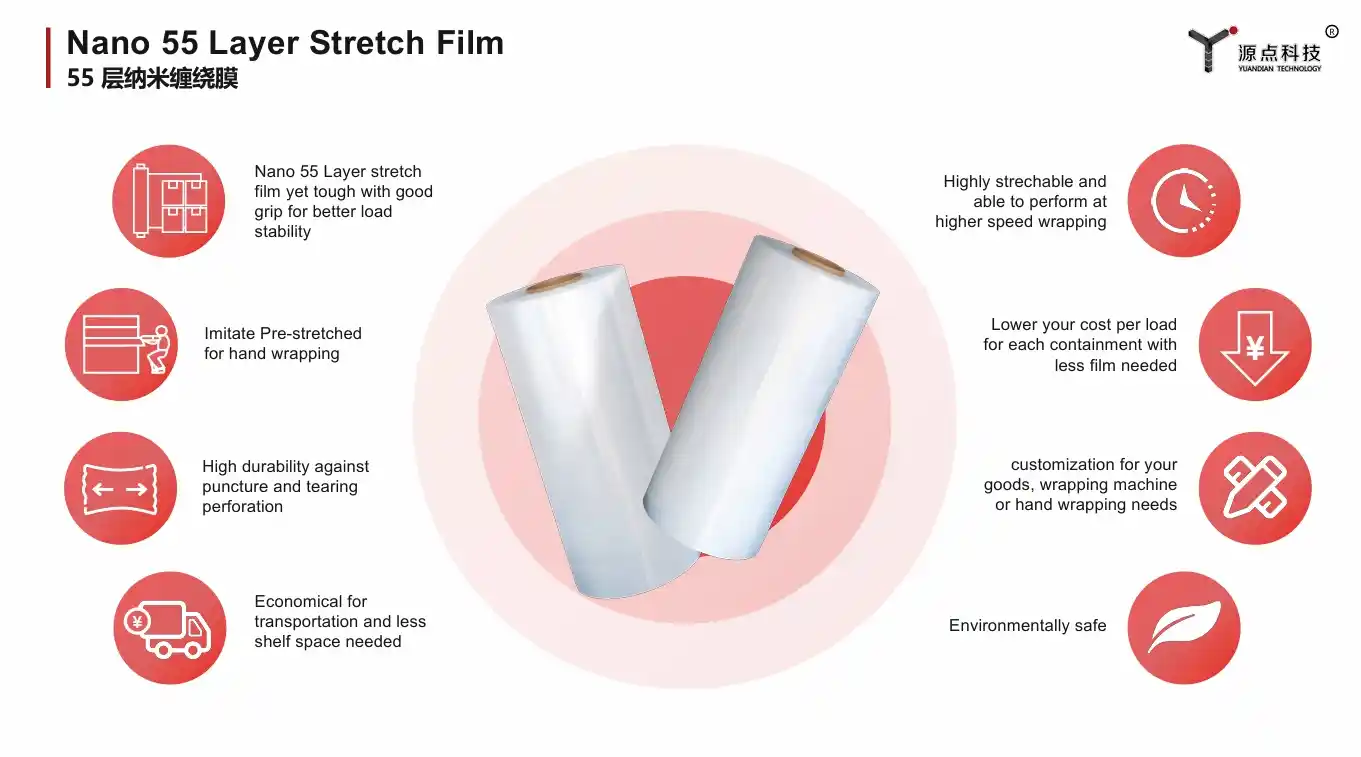Although both pallet wrap and cling wrap are used to protect and store goods, they have significant differences in function, materials and application areas. Pallet wrap is usually used to transport and store bulk commodities. It has a strong load-bearing capacity and is easy to carry mechanically. Cling wrap is mainly used to preserve food, extend its shelf life, and effectively prevent the intrusion of air and moisture. The two are clearly distinguished in their purpose of use and applicable scenarios.
In terms of function and use, pallet wrap is usually used for the storage and transportation of bulk commodities, especially in logistics and warehousing. It can fix multiple commodities together to prevent them from being damaged, deformed or messed up during transportation. Pallet wrap is not only for protecting items, but also for facilitating the operation of forklifts and other handling equipment, reducing the difficulty of manual handling.
In contrast, the main function of cling wrap is to extend the shelf life of food or goods. It wraps the surface of food to isolate moisture and bacteria in the air, thereby slowing down the rate of food spoilage. Cling film is commonly used in households and the food industry, especially in the packaging of fresh fruits, vegetables and meat to help maintain their freshness and taste.

From the perspective of material differences, pallet packaging often uses materials such as wood, plastic, and cardboard, which have high load-bearing capacity and durability. Wooden pallets are usually used for the storage of bulk goods, while plastic pallets are widely used for the storage of food and chemicals due to their water resistance and corrosion resistance. Cardboard pallets are known for their lightness and environmental protection, and are suitable for some lighter goods.
Cling film is mainly made of plastics such as polyethylene (PE) or polyvinyl chloride (PVC), which has high transparency and flexibility. These materials can form a sealed film layer that can prevent air and moisture from entering, and is not easy to break, ensuring the safety of the contents of the package.
Pallet packaging is mostly used in the fields of industry, warehousing and transportation, and is suitable for integrated packaging of large quantities of goods. For example, electronic products, household goods, daily chemicals, etc. are often transported in batches using pallet packaging. During the warehousing process, pallet packaging is easy to stack and improves space utilization.
Cling film is more used in the packaging of food, medical and some perishable goods. In the food industry, cling film is widely used to package vegetables, fruits, meat and ready-to-eat products to ensure their freshness. Special types of cling film are also used in the medical field to package medicines or medical devices to prevent contamination.
Of course, there are advantages and disadvantages of these two products. The advantage of pallet packaging is that it has strong load-bearing capacity, is suitable for the storage and transportation of bulk commodities, and can be reused. However, its disadvantage is that it is large in size, occupies space, and has high transportation and storage costs.
The advantages of cling films are that it is easy to use, low in cost, and can effectively extend the shelf life of goods, but its disadvantage is that it can only protect the surface of the goods and cannot provide sufficient load-bearing support.
Understanding their functions and differences can help us better choose the right packaging method to ensure the safety and freshness of items. In different fields, these two packaging methods play an irreplaceable role. Yuandian owns the advanced and innovative technology and equipment to integrate industrial chain resources. Focusing on development and production for barrier packaging solution to help transform intelligent manufacturing.
